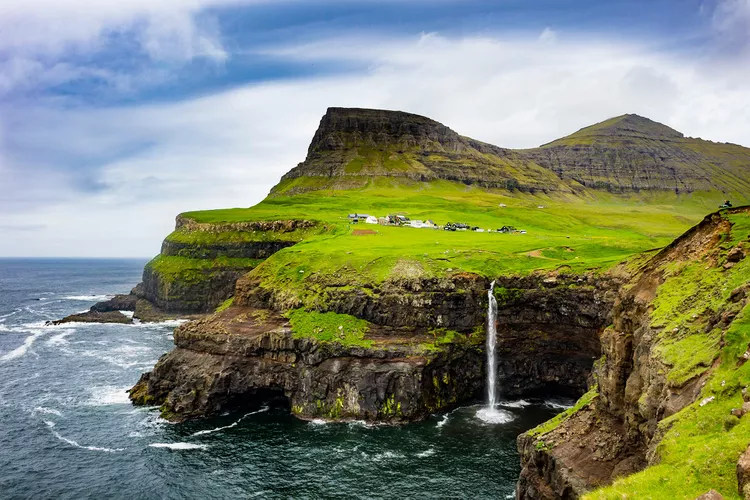Overview
- New Flight Route: Atlantic Airways launches a nonstop flight from New York to the Faroe Islands.
- Expanding Tourism: The semi-autonomous Faroe Islands are seeing growth in tourism and infrastructure.
- Natural Beauty: The Faroe Islands offer stunning landscapes and unique hiking experiences.
If you click on links we provide, we may receive compensation.
- Airlines + Airports
Atlantic Airways launches a flight from New York to the Faroe Islands this summer.

Situated halfway between Iceland and Norway in the frigid North Atlantic, the semi-autonomous, 18-isle Faroe Islands have been historically isolated. Nevertheless, this summer, that’s changing—slowly but surely.
In 2020, the first international hotel brand opened in the Faroes, a Hilton in the capital of Tórshavn. Along with this, there are new boutique hotels, taking cues from the 14-room Havgrím Seaside Hotel, featuring picturesque views of Tórshavn’s neighboring island, Nólsoy. Moreover, Atlantic Airways, the flag carrier of the archipelago, took delivery of a modern narrowbody plane in 2019, an Airbus A320neo.
On their own, these developments may not seem groundbreaking. However, for an island nation of just 50,000 residents—with five traffic lights and more sheep than people (approximately 70,000)—a few new hotels and a single aircraft represent significant progress in just a few short years.
A New Nonstop Flight to the U.S.
This might be the Faroes’ most significant travel news to date.
For those eager to reach the Faroe Islands without layovers, Atlantic Airways has confirmed it will commence the nation’s first transatlantic route between Vágar Airport and New York. It’s important to note, however, that “New York” refers to Newburgh’s Stewart Airport, which is situated about 70 miles north of New York City. The flight covers a distance of 3,024 miles and will take approximately six hours in each direction aboard an all-economy-configured Airbus A320neo. Consequently, there are no lie-flat seats available.
Seasonal service is set to start with once-weekly flights from mid-August through early October. Sales are anticipated to begin on May 15. Currently, Atlantic Airways serves four year-round destinations with a fleet of three Airbus aircraft: Billund, Denmark (BLL); Reykjavík (KEF); Oslo (OSL); and Copenhagen (CPH).
While a once-a-week service between New York and the Faroes for a three-month duration may be limited, this is seemingly intentional. The route places the Faroe Islands on a global stage, one that was evolving right before the pandemic, and the archipelago experienced double-digit tourism growth in 2019.
Furthermore, Atlantic Airways operates a small fleet of aircraft, and tourism in the Faroes remains a relatively emerging industry. Even though the country possesses impressive infrastructure (for instance, there is a subsea tunnel network connecting most of the islands, including the world’s first underwater roundabout), it does not yet particularly cater to tourists. Nevertheless, this factor contributes to the Faroes’ charm, as it remains one of the rare places in the world that feels relatively untouched.
During my week-long visit to the Faroe Islands in 2019, I was captivated by its breathtaking natural beauty and the genuine sense of hospitality I encountered; it was undoubtedly one of the most remarkable places I’ve experienced. To fully appreciate the majesty of this nation, renting a car is essential, as it allows easy access to remote villages. The government has designated particularly scenic routes as “buttercup routes,” and the advanced tunnel and ferry systems ensure that the islands are well-connected. Imagine a picturesque bend in the road revealing a double rainbow stretching above a fjord, with a cascading waterfall plummeting off a cliff into the Atlantic.

During my time in the Faroe Islands, my friend and I frequently found ourselves as the only hikers on the trails. It felt as if everywhere we looked, every corner we turned, or every mountain we climbed, there was a rainbow accompanying us. Our only companions? Sheep.





